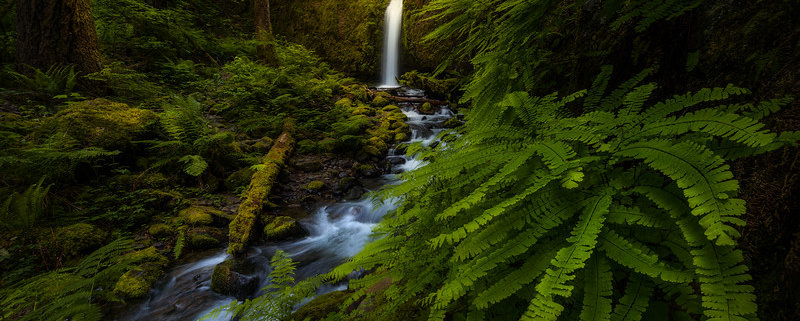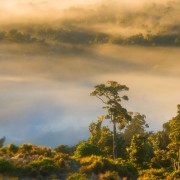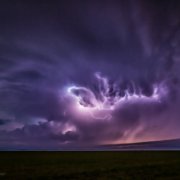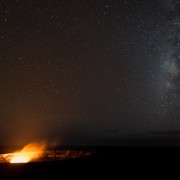Top 5 Spring Photography Tips to capture Compelling Photos
Has Spring sprung?? Are flowers blooming everywhere you look? Has the snow started to melt and the waterfalls flowing with lush green foliage?? Spring photography gives landscape photographers an opportunity to capture colors that were missing from the dormant white winter months. Besides colors in the spring flowers, you will have the opportunity to capture stunning and moody photos of waterfalls and the Milky Way as well.
Spring photography requires a beginners photographer to look at things a bit differently to come away with breathtaking photos. One of the first things you will need to do is find out what photo opportunities are present in the location you are trying to photograph. This research will then help you choose the right photography equipment to take advantage of the seasonal changes that come about in spring. To help you get started here are 5 highly effective spring photography tips:
Waterfalls Photography in Spring
Nothing gives more of an instant impact in imagery then feeling like you’re about to get drenched by a wave or waterfall! So an effective waterfall photography composition will require you to get in the water, get low, and try to time your exposures to capture flow of water being kicked up and redirected by a rock or log.
I think everyone along their landscape photography journey has enjoyed shooting a watery scene. When I first got hooked on landscape photography, it was because of waterfalls. This led to the technical side of my brain becoming infatuated with circular polariser and neutral density filters (ND filters). At first, I would photograph waterfalls with long exposures of 10-15 seconds. But later realized I was losing any feeling of motion in the waterfall photos due to long exposures because the water was completely blurred. For effective waterfall photography I would recommend that you aim for a slow shutter speed that captures some texture, while long enough to blur the motion. I would recommend that you experiment with slow shutter speed between 1/3rd to 1/2 second, or even up to a full second. Don’t forget your circular polarizer. A circular polarizer to cut reflections on wet rocks and reveal the vibrant colors in the fresh spring foliage.
Photograph Wildflowers in Spring
April showers brings may flowers, right? Well, oftentimes a wet winter and spring can produce some extraordinary conditions for wildflower photography. When the dreary winter months begin to break, set out and find some wild flowers. Flowers up close and personal can be great. Natural foreground elements, and the array of colors can produce compelling spring photography compositions. Wildflowers in spring also present you with a great time to work on techniques like focus stacking, macro photography, or portraiture. And as an added bonus, the fresh air and singing birds are great for shaking off the winter blues and cabin fever!
Photographing a wildflower requires you to be at the right place at the right time. So I would highly recommend doing some research on the wildflower season in the area you are trying to visit. And remember that the weather conditions dramatically impact the quality and timing of the wildflower blooms.
Use a low perspective in your Photography Composition
So far we have talked about wildflower and waterfall photography, but what do you do when you find them? How do you make them more interesting with a compelling photography composition? With the abundance of cool foreground subjects, spring season is a great time to work on photography composition. One of my favorite types of spring photography composition is the wide angle, “in-your-face” shot with big, bold, and CLOSE foreground subjects. But to really seal the deal, using a low perspective with a strong closeup subject in your landscape photography composition.

Waterfall photography composition with strong close foreground object Panther Creek Falls, Washington
When getting really low and close to your foreground pay attention it may be difficult to get your entire landscape photo in sharp focus. You may not be able to increase aperture setting on your mirrorless or DRL camera enough without compromising sharpness and details due to diffraction. This is a time when you may need to use a focus stacking workflow. You will have to capture multiple photos using the same exposure, but at different focal lengths to get every part of your frame in sharp focus. You can then merge them in Photoshop to get a sharp landscape photo with a close foreground object.
Create mood in your Spring Photography
The spring weather can bring lots of moisture and mixed temperatures. One day it might feel like spring and the next it feels like winter again. Those extreme and sudden shifts in temperature and moisture can create some magical atmosphere that is perfect for a moody landscape photography! When this happens, I grab the gear and head out the door faster than you can say fog!
Here in the southwest, fog and cloud inversion can be extremely rare. But if you can be in the right place at the right time, you can create some amazing landscape photos. Watch the weather and, when the conditions are right, be ready! Also, avoid using a circular polarizer when capturing foggy scenes as it actually detracts from the hazy drama that you’re chasing.
Pursue Night Photography
The Milky Way in the spring is low in the sky in the Northern Hemisphere. If you’re an early-riser, you can catch it in the very wee hours of the morning. When the skies are clear, head out to a dark place for Milky Way photography in spring! Look for interesting foregrounds to include such as water left from the rains to reflect the stars or a unique Milky Way photo! Night photography doesn’t have to be terribly complicated.
You can get started with a fast wide angle lens with an aperture setting of f2.8 or higher. An aperture setting of ƒ2.8, a shutter speed of 20 seconds and ISO setting of 100, using a wide angle lens with focal length between 12mm to 20mm is a good starting point for Milky Way photography.
Just keep in mind that spring weather can be unpredictable and sometimes dangerous. Lighting, hail, high winds or a sudden drop in temperature can produce dangerous conditions for a landscape photographer. So it is best to check the weather before heading out on a long hike and carry weather protection for yourself and your photography equipment.
Of course all of this depends entirely on getting out there and taking photos! Spring is my favorite time to be in the field. So get out there and be creative with your spring photography!














